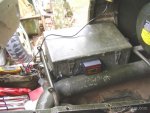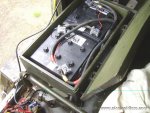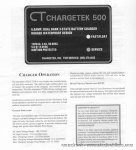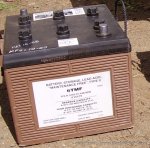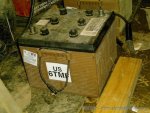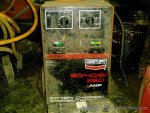- 10,350
- 74
- 48
- Location
- Meadows of Dan, Virginia
Yesterday, I installed the two 6TMF batteries I got from Medlog at Aberdeen.
The Chargetek 500 is handling it from now on and after 18 hours it is still in "Bulk charge" mode with measured voltages of 13.08 and 13.24 volts on them.
Both batteries were manufactured in 2000 and measured about 11.4 volts open circuit when installed.
Bulk charge means that a charging current of about 5 amps is applied. When 80% of battery capacity has been reached, it switches to "Absorption mode" until fully charged. Float charging is maintained continously after the batteries are fully charged.
PS. My only complaint is that I received Exide batteries, not Deka....
The Chargetek 500 is handling it from now on and after 18 hours it is still in "Bulk charge" mode with measured voltages of 13.08 and 13.24 volts on them.
Both batteries were manufactured in 2000 and measured about 11.4 volts open circuit when installed.
Bulk charge means that a charging current of about 5 amps is applied. When 80% of battery capacity has been reached, it switches to "Absorption mode" until fully charged. Float charging is maintained continously after the batteries are fully charged.
PS. My only complaint is that I received Exide batteries, not Deka....
Attachments
-
105.8 KB Views: 772
-
123.3 KB Views: 772
-
88.1 KB Views: 772
-
145 KB Views: 769




